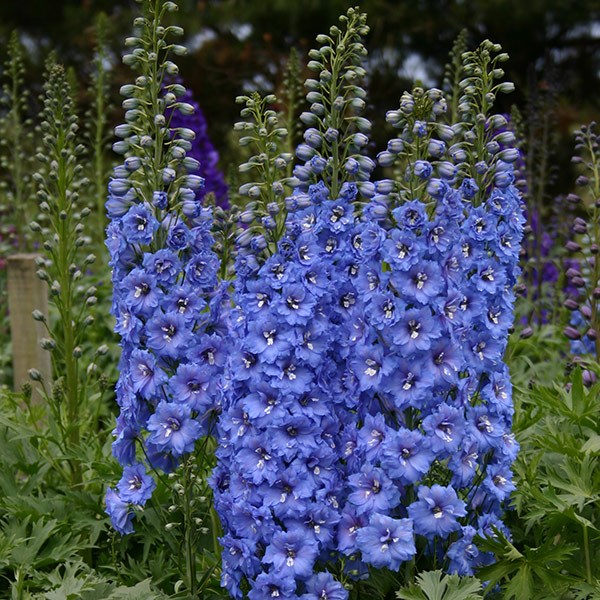
Grow delphinium plants in a sunny area with soil that is consistently moist. Don’t let them dry out. Mulch helps retain moisture and keeps roots cool. Performance of this specimen is enhanced when growing delphinium plants in neutral to slightly alkaline soil pH. Soil should be well-draining.
Care of delphinium should include regular fertilization in spring when the plant begins to grow, and during the flowering period. Work in well-composted organic material such as rotted cow manure, or use a basic 10-10-10 granular fertilizer. Yellowing foliage or stunted growth often indicates the plant needs more fertilizer. Sun exposure is another aspect of care of delphinium that the gardener must get right for the showy blooms to appear. Gentle morning sun is preferable to the delphinium plants, which are picky about extreme differences in temperatures. Provide afternoon shade, especially when planted in hotter zones.
An important aspect of caring for the thought to be difficult delphinium is deadheading the first blooms in early summer. Remove flower stalks when blooms are spent. When all blooms are removed and moisture and fertilization requirements are met, the gardener can expect a bountiful blast of blooms in late summer or early autumn. This is when delphinium flowers are at their most beautiful. Often, this may be the final show for the short-lived perennial, but the striking beauty and long lasting blooms are worth the effort. Taller varieties may require staking, especially when planted in areas with heavy rain or wind. Stems are hollow and break easily under this type of stress. Some disease and insect pests may attack delphiniums, keep an eye on young plants and when planting delphiniums, make sure soil conditions are right for the plant. Delphiniums may be propagated from seed or basal cuttings; however, don’t propagate from diseased plants.
Sources
https://www.gardeningknowhow.com/ornamental/flowers/delphinium/growing-delphinium-plants.htm